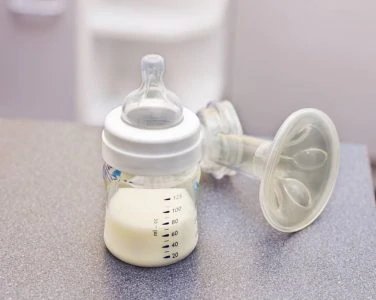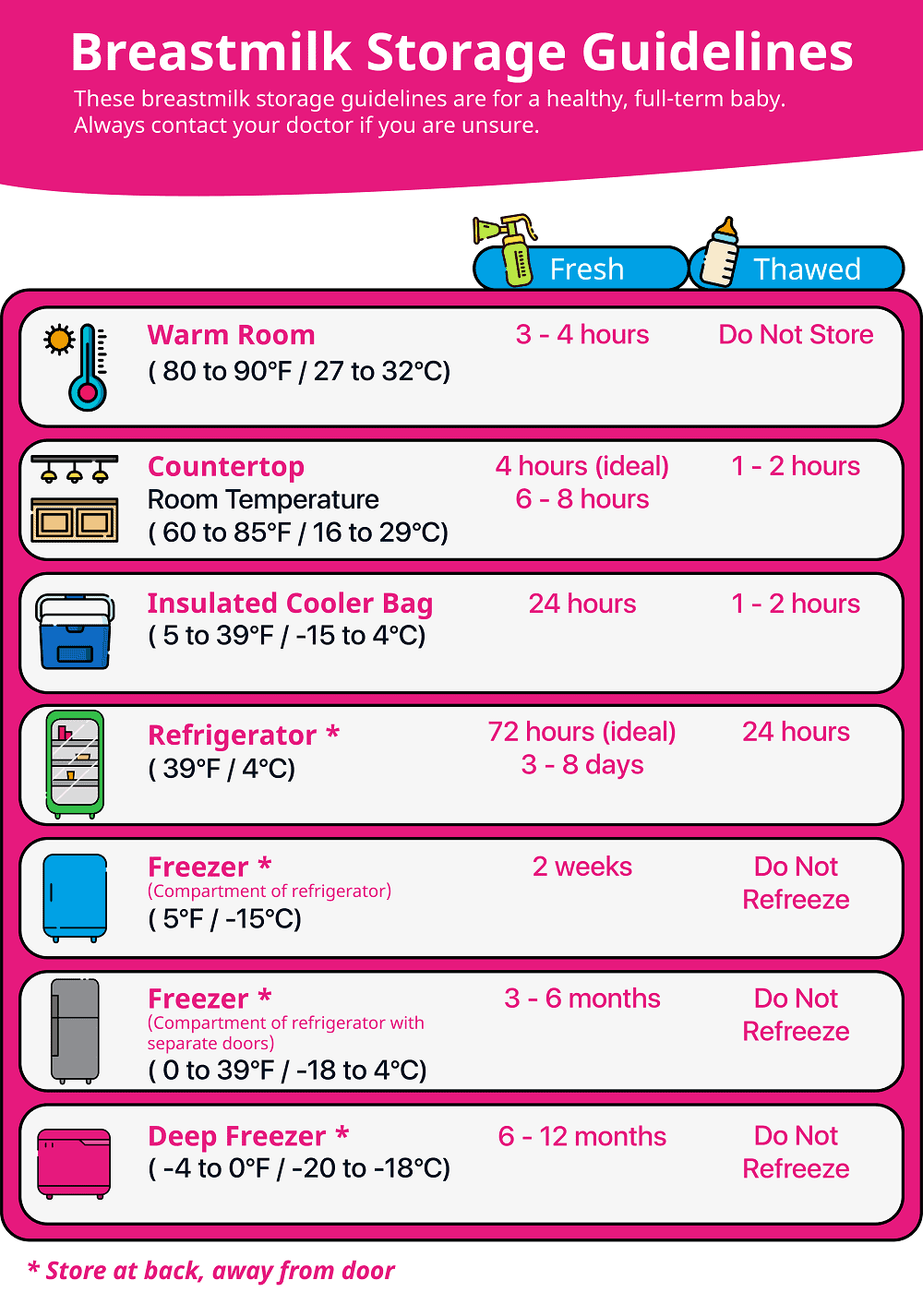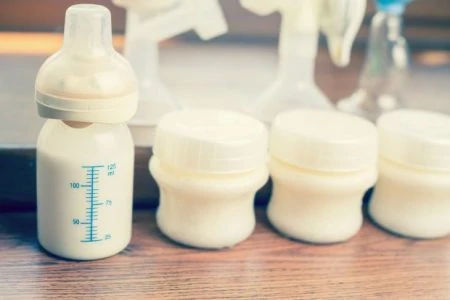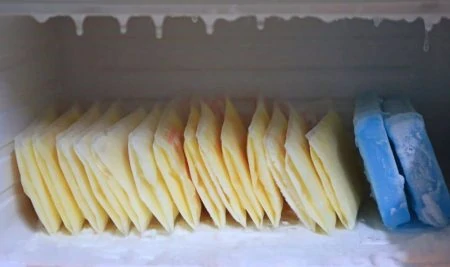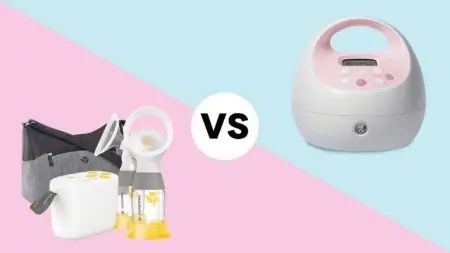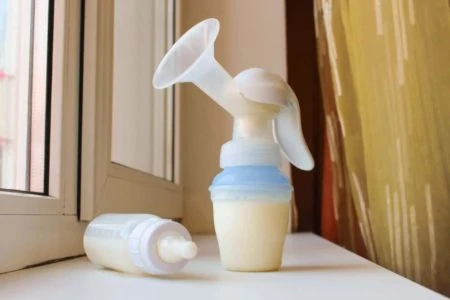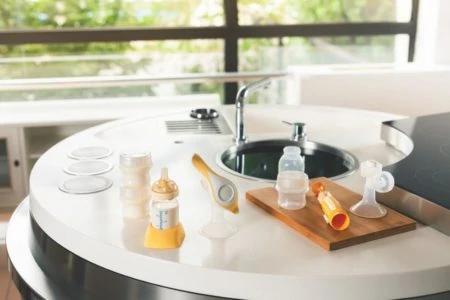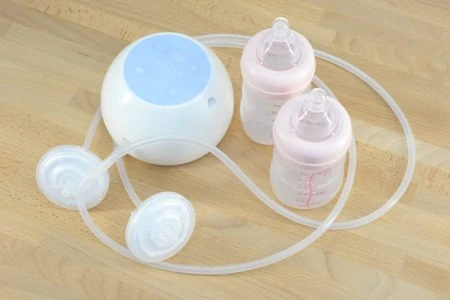Human milk is different from cow’s milk. It separates, changes color, and sometimes smells soapy even when it is perfectly safe.
We consulted the experts to bring you the facts on breast milk storage. Here is how to use your senses to check for spoilage so you can feed your little one with confidence.
Key Takeaways
- Know the numbers: Breast milk is best used within 4 hours at room temperature, 4 days in the fridge, and 6 to 12 months in the freezer.
- Trust the swirl: Good breast milk separates but mixes back together easily. If chunks float after swirling, toss it.
- High lipase is normal: If your milk smells soapy or metallic but not sour, it is likely due to high lipase and is safe to drink.
- When in doubt, throw it out: If the milk smells sour like rancid cow’s milk, do not feed it to your baby.
Guidelines for Storing Breast Milk
To keep your milk safe, you need to understand the storage windows. There are generally two phases of breast milk: “fresh” and “usable.”
Fresh milk is recently pumped milk. It is at its peak quality and is full of live antibodies and nutrients.
Usable milk is past that immediate window but has been stored properly. It is safe and nutritious, even if some of the live cells have diminished over time in the fridge or freezer.
The CDC and La Leche League provide these standard guidelines (1):
- Room temperature: 4 hours is optimal.
- Refrigerator: 4 days is optimal.
- Freezer: 6 months is best, up to 12 months is acceptable.
- Thawed milk: Use within 24 hours (do not refreeze).
The “Rule of 4s” vs. “Rule of 6”
You might hear lactation consultants mention the “Rule of 6” or the “Rule of 4s.” These are just easy ways to remember the numbers.
The “Rule of 6” suggests:
- 6 hours on the counter.
- 6 days in the refrigerator.
- 6 months in the freezer.
However, current best practices lean toward the “Rule of 4” (4 hours out, 4 days fridge) to ensure the highest safety. If you are caring for a medically fragile or premature infant, stick strictly to the stricter 4-hour/4-day guidelines.
Remember
Factors Affecting Storage Time
Two things dictate how long your milk lasts: temperature consistency and the container you use.
Temperature Stability
Milk needs to stay cold. Store your breast milk at the back of the refrigerator where it is coldest.
Take Note
If you use a deep freezer (chest freezer), milk can last up to 12 months because the temperature stays well below freezing and the door isn’t opened as often as a kitchen freezer.
Storage Containers
Oxygen and bacteria are the enemies of fresh milk. Store your liquid gold in:
- Commercially made milk storage bags (pre-sterilized).
- Clean hard plastic bottles with tight lids.
- Glass baby bottles with tight lids.
The “Senses” Test: Look, Smell, and Taste
Unlike cow’s milk, breast milk changes constantly. It might look blue one day and yellow the next. Here is how to interpret what you see and smell.
1. Understanding the Smell (Lipase Issues)
With dairy milk, the sniff test is 100% accurate. With breast milk, it is trickier due to an enzyme called lipase.
Lipase breaks down the fats in the milk to help the baby digest them. In some mothers, high lipase activity can make the milk smell soapy or metallic after it has been stored for a while.
This milk is safe to drink. It is not spoiled. However, if the milk smells sour, rancid, or vomit-like, it has gone bad.
Factors that change the smell include:
- The mother’s recent diet.
- Medications or supplements.
- High lipase activity (soapy smell).
- Chemical oxidation (rancid smell).
2. Understanding the Taste
Smell and taste are linked. If you have high lipase, the milk will taste soapy. If the milk is spoiled, it will taste sour.
Strong flavors from your diet, like garlic, chili, or curry, can also flavor the milk. This is actually good for your baby; it gets them used to different flavors before they start solids!
3. Understanding the Appearance
Breast milk comes in a rainbow of colors (2). Do not panic if you see:
- Yellow/Gold: Usually colostrum or high-fat hindmilk.
- Blue/Clear: Usually watery foremilk.
- Green: Often linked to eating lots of green veggies or sports drinks.
- Pink/Red: usually indicates a cracked nipple or broken capillary. It is safe to feed.
It is also normal for milk to separate. The fat rises to the top and the water sinks. This does not mean it is bad.
What if your breast milk looks pink? It’s possible that small cracks in your nipple that may be bleeding can make your milk look very red or pink, but this milk is still safe for your baby to drink. Working with a lactation consultant can help you determine the cause for the pink milk as well as how to avoid it happening again.
Editor's Note:
Michelle Roth, BA, IBCLC3 Steps to Identify Bad Breast Milk
So, is it safe to feed? Follow these three steps to decide.
1. The Swirl Test
Because milk separates, you need to mix it. Take the bottle and gently swirl it (don’t shake it vigorously).
The verdict:
- Good: The cream mixes back into the water easily.
- Bad: The milk stays separated or you see chunks floating in it that won’t dissolve.
2. The Sniff Test
Give the milk a smell.
The verdict:
- Good: Smells sweet, earthy, or mild.
- Safe (but weird): Smells soapy or metallic (High Lipase).
- Bad: Smells sour, rancid, or “off” like expired cow’s milk.
If you discover your frozen milk always smells soapy, you likely have high lipase. To prevent this in the future, you can scald your milk before freezing it to stop the enzyme activity.
How to scald breast milk:
- Heat fresh milk in a small pan until small bubbles form around the edge (about 180°F). Do not boil it.
- Remove from heat immediately.
- Cool quickly in an ice bath.
- Freeze.
3. The Taste Test
If it looks okay and smells okay, but you are still worried, taste a tiny drop.
The verdict:
- Good: Sweet and creamy.
- Bad: Sour or biting flavor.
If it tastes sour, trust your gut and toss it.
FAQs
Trust Your Senses
Breastfeeding and pumping are labor-intensive, so it is natural to want to save every drop. By following the “Rule of 4s” for storage and using the swirl and sniff tests, you can easily spot spoilage.
If you are ever on the fence about a bottle, the safest choice is to toss it. But if it just smells a little soapy? That is likely just chemistry, and your baby will be just fine.
